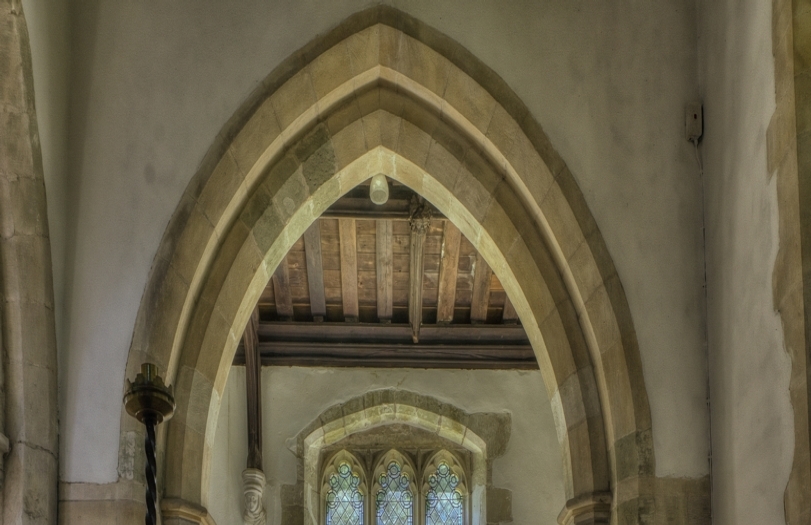Daisy-wheels, butterflies and enigmas at All Saints', Idmiston
All Saints', Idmiston provided plenty of material both internally and externally both in incised form and pencil. Pencil proves to be particularly resilient with our earliest examples dating to 1876. All Saints also provides some unique incisions that we haven’t seen within Wiltshire or indeed, outside the county. The east wall quoins are deeply incised with roughly hewn patterns that are enigmatic in meaning and are quite unique.
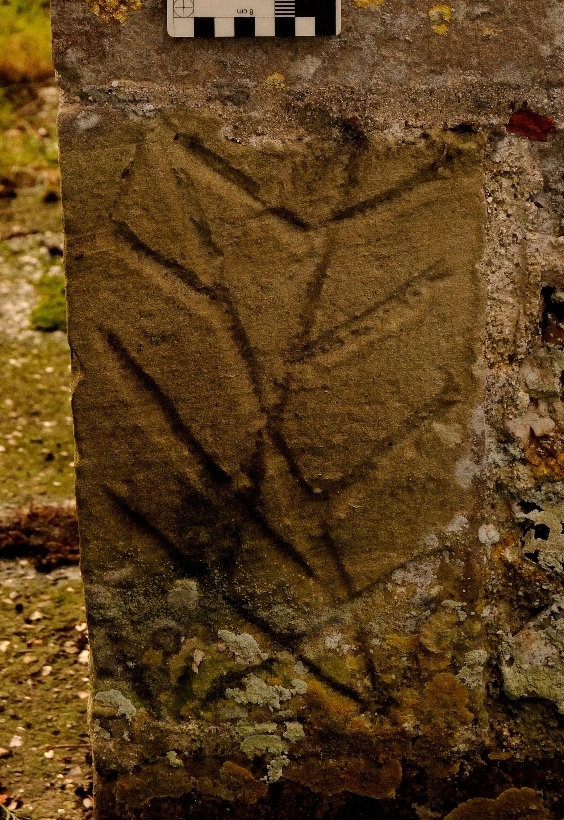
The lintel pictured above is situated in the room over the porch; accessible and visible only to those in the room this palimpsest represents a fine example of multi-period graffiti. We can see two inverted “Vs” which may offer apotropaic symbolism as a derivative Marian mark. Incised dating indicates 1686 whilst later pencil graffiti dates from 1902. The need to indicate presence is a very human element and although not necessarily memorialisation in the conventional inscription sense. it was accepted practice during the 17th century - as witnessed by the number of eminent people including vicars incising their mark.
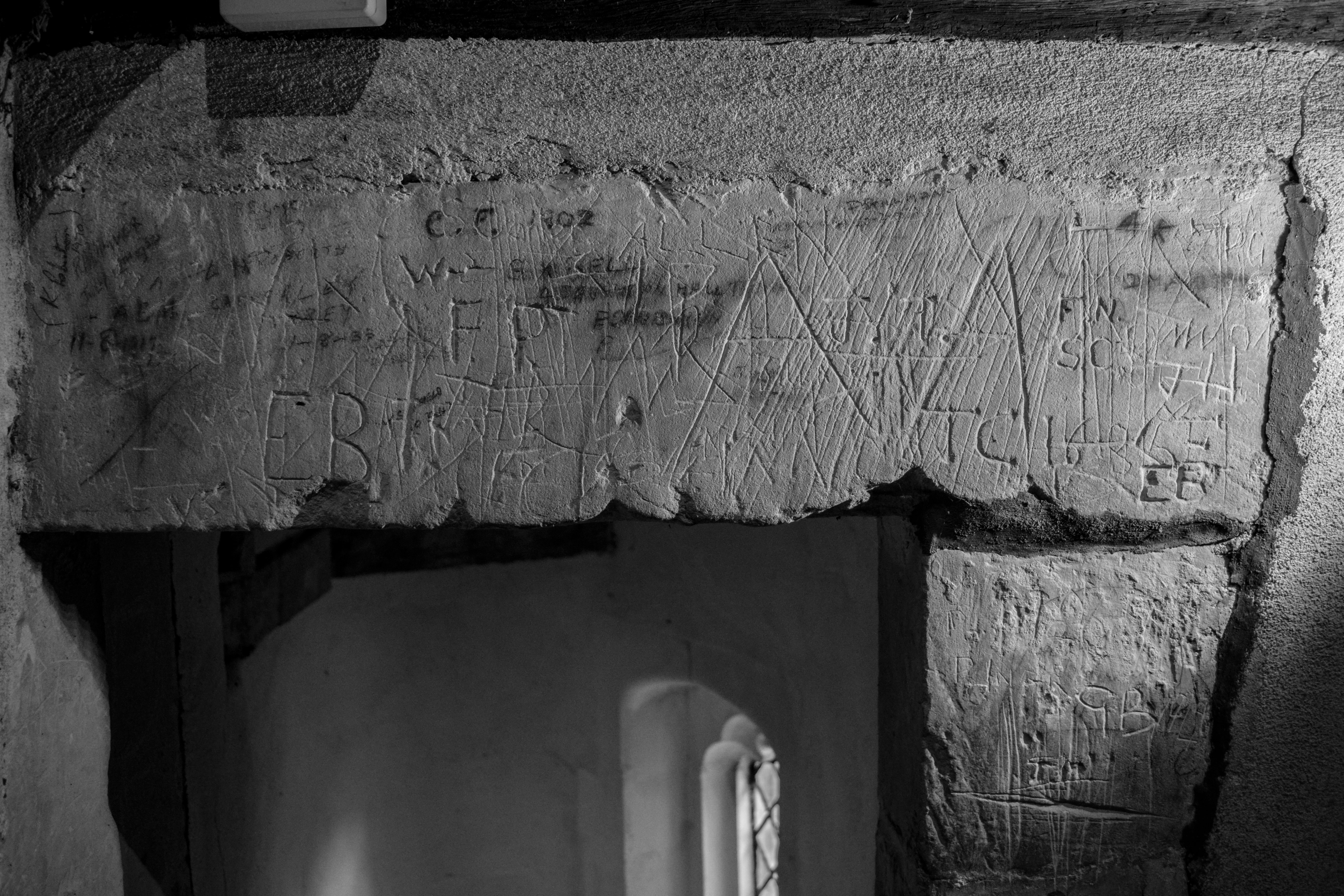
“Butterfly” marks, a single line motif, offer protection of a symbolic nature through continuous surface contact entrapping and confusing evil spirits.
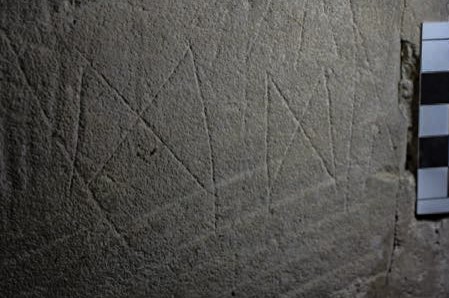
The picture below shows a highly eroded hexafoil, or “daisy-wheel” another example of a common apotropaic symbol. This is overlaying concentric circle arcs which are visible in the lower area of the image.
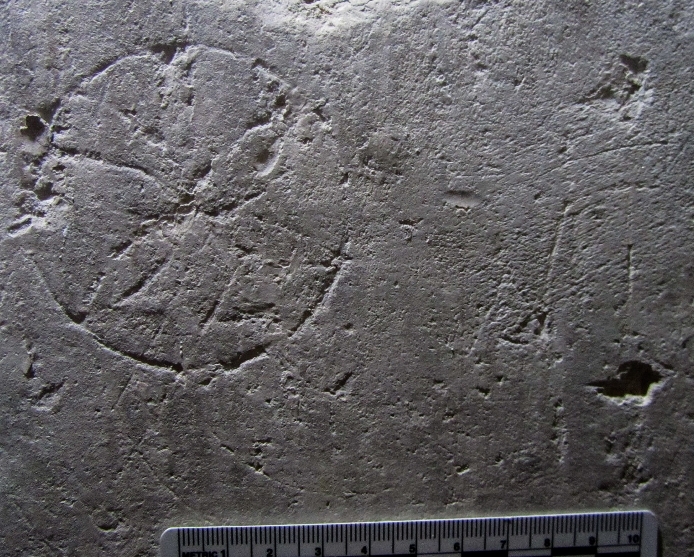
The image below provides another example of All Saints’ uniqueness with rare symbolism whose meaning is both interesting and elusive.
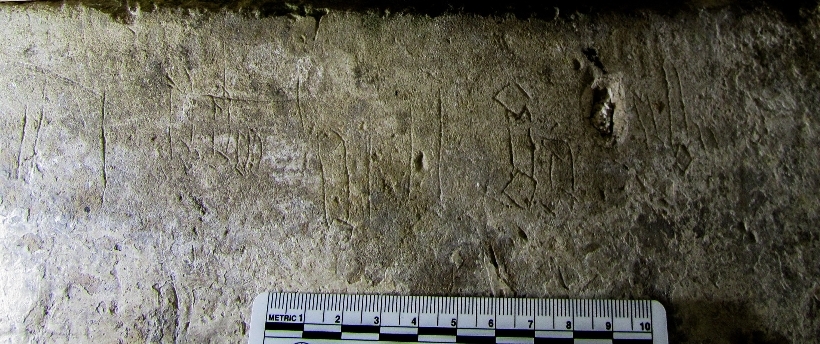
_____________________________________________________________________
This information was provided by the Wiltshire Medieval Graffiti Survey (WMGS). In late 2015, this group began recording graffiti in churches under the care of the Churches Conservation Trust in Wiltshire. Their work has involved fortnightly visits by a dedicated team, where local people are invited to take part and gain an alternative view of the fabric of their church.
The variety of historic graffiti has been immense from personal initials, often with a date, to enigmatic symbolism that has its roots in protection of a sacred space.
To record the inscriptions, a multi-LED torch was used at a sharp, oblique angle in order to emphasise shadowing of the incision, often referred to as a “raking light”. The result can “reverse” the incision into a positive relief rather than negative, making for easier interpretation.
Further detail can be captured using Photogrammetry and Reflectance Transformation Imaging (R.T.I).
Each image taken is referenced on a photo log sheet detailing the surveyors, a brief description and the all important photo frame number.
The group's work has been submitted to the Historic Environment Record. It has been submitted in a standardised form to ensure consistency in reporting. The advantages of this include access to, and correlation of material on a national level will enhance understanding across the country not just on a county level.

